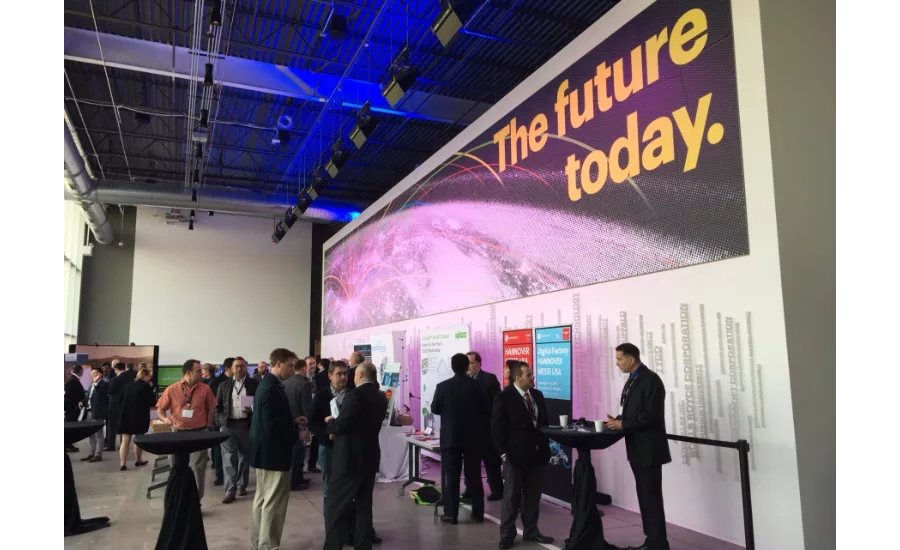Smart Factory World Symposium looks at Manufacturing 4.0
Forcam’s day event discussed the imminent digital transformation in manufacturing.

The future of US manufacturing was the center of discussion at Forcam’s Smart Factory Symposium hosted at the Digital Manufacturing Design Innovation Institute in Chicago. The day-long conference addressed the new rules of Manufacturing 4.0, also known as Industry 4.0 or the Industrial Internet of Things.
In his keynote presentation, David R. Brousell, co-founder of the Manufacturing Leadership Council at Frost & Sullivan, explained we are in the middle of the fourth wave of industrial change. The first industrial revolution started in the 1780s with mechanization and line production, then evolved to mass production in the 1870s and eventually entered into the third stage in the 1960s with computer control and the introduction of automation.
“These are structure shifts,” he says. “And in each of these shifts, many companies went out of business because they couldn’t change.”
In this fourth wave of industrial revolution, the new technology driving the change are sensors, connectivity, data analytics, collaborative robotics, predictive maintenance, 3D printing and augmented reality.
Brousell says for companies to really embrace Manufacturing 4.0 and benefit from the opportunities it offers, they must change their technology, their organization and leadership structure.
“There will have to be more cross-functional teams across businesses ecosystems,” he says. “There must be a breakdown of functional silos.”
This imagery of knowledge existing in silos on the plant floor reoccurred throughout the presentations, including in a panel discussion on lean manufacturing. To unlock the capabilities of Manufacturing 4.0, panelists said companies must create more collaboration between all people and processes.
“It’s a culture shift,” says Isaac Bennett, global IT innovation manager at Maxion Wheels. “The IT is easy, buy a sensor and plug it in and pull data. But it’s transforming the culture of the company and the silos on the plant floor. Quality is a silo, maintenance is a silo— and yes, we talk to each other, but we’re not collaborating. And we need to do that to get true value.”
The panelists, including Jamison Rediehs, director of Rexnord Business Systems at Rexnord Aerospace and Shahrukh Irani, PhD, and president at Lean and Flexible, also agreed that the key to the concept of lean manufacturing entails a cultural shift in a plant that involves people and not just changing operational processes. And it’s not only the technology that is allowing this new manufacturing shift to happen, but the cost.
“Industry 4.0 has really been enabled by how cheap and inexpensive it now is to transfer data, how cheap sensors are, how cheap networks are getting, and also the cloud is enabling all of this, too,” says Bennett.
The event was held at the DMDII, a manufacturing hub located in Chicago that is part of a larger network of Manufacturing USA institutes dedicated to transforming American companies and preparing them for the future. The DMDII has over 300 members that include industry companies like Siemens and GE as well as academic partners and also receives funding from the US Department of Defense. The building houses a workshop floor that showcases digital technologies available to companies.
“We develop technology and de-risk it in order to make production more efficient,” says Tony Del Sesto, director of manufacturing research and development for DMDII.
He says the DMDII can demonstrate what the digital technologies are, how they work and how they can solve case-driven problems. Simulation is one of the capabilities available on the DMDII’s plant floor, along with testing interoperability of new digital solutions to show that it will or not work in applications.
“Simulation is a way to cut down costs. Plus, it’s faster to innovate products if you're creating them in a virtual world,” he says.
Looking for a reprint of this article?
From high-res PDFs to custom plaques, order your copy today!





